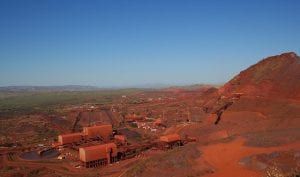New South Wales Forestry Corporation has hosed down reports that it is planning to “carpet bomb” pine plantations in the state with “hundreds of giant wind towers,” after claims published last week in a media release from the NSW National Party.
The claim comes from a statement reportedly made by a spokesperson for Oberon Against Wind Towers, Chris Muldoon, at a meeting of locals concerned about the impact of wind energy on the central tablelands region.
“The Forestry Corporation of New South Wales has openly said that it will practically carpet bomb Oberon forests with hundreds of giant wind towers, which will undoubtedly lead to the desecration of the economic, environmental and social fabric of the local community,” Muldoon is quoted as saying.
According to the NSW Nationals news item, the Oberon Community Forum, attended last week by federal Nationals leader David Littleproud and Senator Ross Cadell, heard “how prime agricultural and forestry land in the area could soon be ripped up for hundreds of wind turbines.”
Muldoon reportedly told the meeting that the Forestry Corporation of NSW is planning to install between 350 to 625 wind turbines in the area, with towers as high as 285 metres.
Littleproud attended the Oberon meeting on the same day that the federal Labor government announced its plans to fast-track Australia’s shift to renewables through an expanded Capacity Investment Scheme.
“The Nationals are not against renewables,” he too stressed, before going on to demonstrate that the party is also not against exploiting regional fear, uncertainty and doubt over renewables for political advantage.
“Mr Bowen’s announcement today will be met with enormous anger in Oberon,” he said in a separate statement issued after the Labor announcement.
“A future Coalition government will put an end to Labor’s reckless race to renewables.”
And to the concerned people of Oberon: “These wind farms will destroy native vegetation and highly productive agricultural land.
“Labor’s reckless race to reach 82 per cent renewables by 2030 threatens vast areas of productive farming land in towns such as Oberon, without proper consideration, consultation or safeguards.”
So what’s going on in Oberon?
As RenewEconomy reported, the NSW Forestry Corporation put out a call in March of last year for expressions of interest in developing wind farms within its 2 million-odd hectares of state-owned pine forests.
By July, it had received 47 expressions of interest totalling more than 2.5GW of proposals for wind farms. It has since identified plantations near Oberon, Sunny Corner, Bondo, Orange and Laurel Hill as the best locations for wind projects and is preparing to seek formal proposals from a short-listed number of candidates.
In a statement emailed to RenewEconomy on Wednesday, the Forestry Corp said Muldoon’s claim that there will be 350 turbines – let alone 625 – in state forests in Oberon is wrong.
“Forestry Corporation is undertaking a commercial process to consider proposals for companies to investigate wind farm opportunities in State forest pine plantations near Oberon, Sunny Corner, Bondo and Orange,” a Forestry Corporation spokesperson said.
“The renewable energy companies would have to undergo the normal planning application and approval process which includes detailed requirements for community consultation and environmental assessments. Claims that these projects would result in over 350 turbines on State forests in Oberon are incorrect.”
As for the claims from Littleproud that these wind farms would “tear up” or “destroy native vegetation and highly productive agricultural land,” this is also incorrect.
The plan for the wind farms is to locate them in state forest pine plantations, not farming land and not native forest. Indeed, the co-location of wind turbines on forestry plantations is attractive for the very reasons that it is less disruptive, both environmentally and socially.
“We see co-locating renewable energy developments within timber plantations as an innovative opportunity to boost renewable energy production in NSW and the renewable energy market agrees, with 47 providers registering their interest,” said Gavin Jeffries, Forestry Corporation’s strategy and risk manager, in July.
“Wind farms successfully operate in softwood forests overseas and in Australia, state forest pine plantations are ideal locations because they are often remote from local communities and homes but have good connections to the existing high voltage transmission network.
“They are located in windy areas and have an existing road network.”
The Forestry Corporation also says:
“We will only ever consider a renewable energy project that is compatible with our activities to produce renewable timber, provide community access, manage fire and maintain sustainable forest management. We also have strict requirements limiting the footprint of developments and ensuring we maintain an ongoing supply of renewable timber from plantations.
“We recognise that local communities will be very interested in any potential developments in their local communities, and assure them that if any suitable opportunities are identified, like any other development, normal planning applications and approval would be required.
“This includes community consultation as well as consideration of the environmental impact, noise, landscape and visual impacts, traffic and transport issues, hazard and risks, cultural heritage, water and soil impacts and waste management.”








